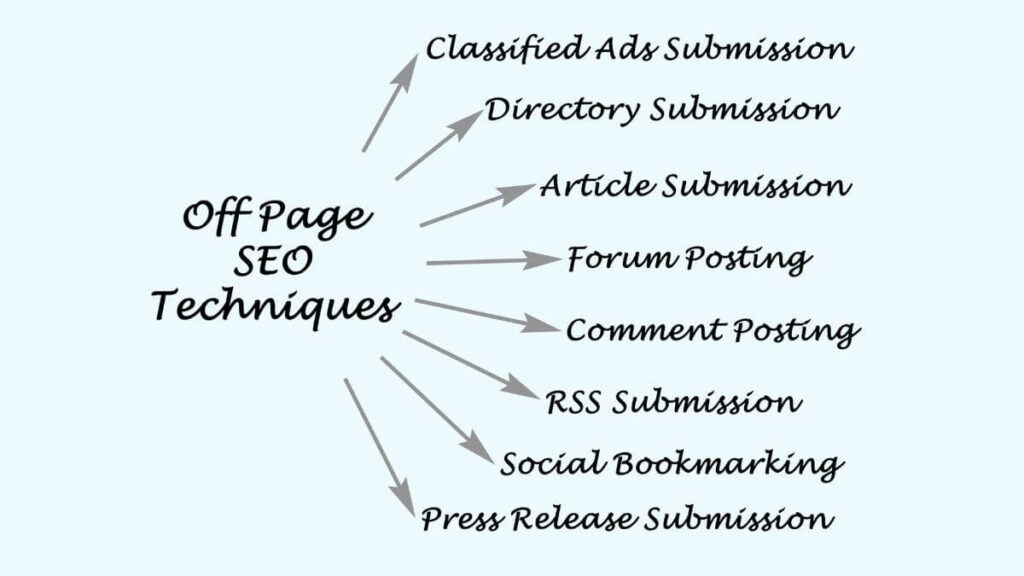If you are a content creator, then you must have felt that creating content alone is not enough. It is, in fact, only half the battle to get your website found on the web. The other half is content optimization for SEO. This is why you must make your content easy to find and understand by search engines as well as human readers.
In this article, we will give you some advice on content optimization for SEO. By following these, you will be able to create content that scores well on the SEO front.
Table of Contents
What is content optimization for SEO?
Content optimization is the process of making your content more visible, accessible, and appealing to search engines and human readers.
While optimizing your content, you will have to first understand your readers well. Then you have to create content on topics they like. After this, you must optimize the content as per the guidelines given by the search engines. This will improve your website’s search engine rankings and increase organic traffic.

Why is it important to optimize content for SEO?
The competition for online visibility is becoming fiercer with every passing day. With billions of websites vying for attention, it’s crucial to ensure that your content stands out from the crowd. Content optimization for SEO plays a vital role in achieving this goal.
Here are some major reasons why it is crucial for every content creator to optimize content for SEO:
A. It Helps You Score Well In Google’s E-E-A-T Parameters
For years, Google used the E-A-T framework (Expertise, Authoritativeness, and trustworthiness) to evaluate and rank content. In 2023, it added another E to this, making the framework E-E-A-T (Expertise, Authoritativeness, Trustworthiness, and Expertise).
- Expertise: By optimizing your content with accurate and relevant information, you demonstrate your expertise in the subject matter. This builds trust among both search engines and readers.
- Experience: This is a new addition to the framework, emphasizing the real-world experience of the content creator or the website on the subject matter. It enhances the credibility and practical value of the information provided. For instance, Google would consider a seasoned gardener who writes about gardening tips to be more credible than a finance professional.
- Authoritativeness: Content optimization allows you to showcase your authority in the industry by providing well-researched and high-quality content. This enhances your credibility and makes search engines consider your website a reliable source.
- Trustworthiness: Optimized content includes trustworthy sources, references, and citations, which add credibility to your content. This helps search engines perceive your website as a trustworthy source of information, leading to higher rankings.
Content optimization for SEO plays a crucial role in establishing E-E-A-T. When your content is optimized correctly, search engines can better understand its relevance and value. By showcasing your expertise, experience, authority, and trustworthiness through relevant and well-optimized content, you not only improve your website’s visibility on search engines but also build credibility among your audience.
B. Improves User Experience
Optimized content is not only beneficial for search engines but also for the user experience. By improving the readability, structure, and overall quality of your content, you make it more enjoyable for readers to consume. This can lead to longer on-site engagement, lower bounce rates, and higher chances of users sharing your content, all of which are positive signals for search engines.
C. Content Optimization gets you more visibility
Content optimization is key to increasing your visibility online. By incorporating relevant keywords and optimizing your content structure, you can improve your website’s rankings on search engine results pages (SERPs). When your content appears higher in search results, it becomes more visible to potential readers and customers.
D. Drives Organic Traffic
Effective content optimization can drive organic traffic to your website. When you optimize your content for search engines, it becomes more discoverable by users who are actively searching for information related to your industry or niche. This targeted traffic is more likely to convert into leads or customers, ultimately benefiting your business.

Tips For Optimizing Your Content
At Inovaticus, we have been doing content optimization for our clients since 2014. We have strategized, created, and optimized content for hundreds of websites, both small and large.
Here are our top 11 tips for optimizing content for SEO, drawn from our vast experience. We are confident that by following these action points, you will be able to improve your website’s ranking and visibility.
1. Target Keywords That Will Get You Traffic
By using the right keywords in your content, you can create a strong foundation for driving consistent traffic to your website.
The key to doing this is to target keywords that people are searching for. Use popular keyword research tools like Google Keyword Planner, SEMRush, or AHREFS to look for these keywords.
Another clever strategy is to use these tools to find the keywords that generate traffic to the websites of your competitors. Thereafter, you can create content using those keywords and attract traffic to your website too.
Tip
While inserting keywords into your content, ensure that they appear naturally within the text.
Any unnatural placement, or using the keywords too many times can attract a penalty from Google.
2. Write In-Depth High-Quality Content
While writing content, writing shallow and basic content is not enough. You must write high-quality content that goes beyond the basics. Write valuable and comprehensive content that provides readers with the information they need.
You can also include in-depth analysis, research, and insights in your content. Provide relevant examples, case studies, and expert opinions wherever possible. These give more credibility to your content and get readers to trust you.
By writing such high-quality content, you can establish yourself as an authority in your field. Content written by Experts is highly valued by search engines and can improve your SEO performance.

3. Ensure Content Is Accurate & up-to-date.
Content tends to become stale quickly, especially if it contains facts and figures. Since search engines prefer to show fresh content to users, this old content may lose its rankings over time.
To ensure that your content remains accurate and relevant, you must review, update, and fact-check them from time to time. Stay up-to-date with the latest industry trends, research, and best practices to provide your audience with the latest information. Add up-to-date information to include the recent developments in your industry.
By updating your content, you will be able to maintain your rankings and also recover the rankings of content that has experienced a drop.
4. Improve your content structure for better readability
Everyone loves content that is well-written and easy to read. A key aspect of content optimization for SEO is to structure your content in a way that is both appealing to readers and search engines. You can achieve this by optimizing your content for style and readability.
There are several techniques you can put in place to improve the style and readability of your content.
- Use headings, subheadings, and bullet points to organize your content. This will make it easier for readers to scan and locate information. This will also enhance the structure of your piece.
- Break your content into small and digestible paragraphs, each focusing on a specific idea or topic. This will make it more cohesive and easier to follow along with.
- Use the style, tone, and language that match the preferences of your target audience. This will ensure that your content resonates with them and keeps them engaged.
- Lastly, improve the readability of your content by using an appropriate font, text size, and spacing.
By following these tips, you can improve the structure, style, and readability of your content for SEO success.
5. Focus On Mobile Optimization
If you look at the analytics data, you will possibly see that more users are accessing your website from their mobiles than from their desktops. To cater to this growing audience, optimizing your content for mobile is essential.
Moreover, search engines like Google now focus on mobile-first indexing of websites. This means that they primarily analyze the mobile version of a webpage for ranking purposes.
By implementing the following mobile optimization strategies, you can increase your chances of ranking higher in search engine results:
- Firstly, focus on optimizing the layout, navigation, and design of your content for mobile devices. You must ensure that your website and content are responsive, i.e., they look good on different screen sizes.
- You must also make sure that your content loads fast, even on slower mobile networks. Slow-loading websites can lead to high bounce rates and a poor user experience.
- To guarantee a consistent user experience, test your content on various mobile devices and browsers. Check that all features, such as images and interactive elements, function properly on mobile devices. This will help you identify any issues and make the necessary adjustments to optimize your content for mobile users.
6. Optimize the headings, metadata, URL, and alt text
Meta-title, meta-description, URL, and alt text are all crucial for helping search engines understand your content. These can also make or break the chance of your content ranking well in SERPs.
- The title should accurately represent the content while grabbing the reader’s attention.
- It is also essential to write concise meta descriptions that entice users to click through from search results.
- The URL must be descriptive and concise, including relevant keywords that give users an idea of what the content is about. Avoid using long, vague URLs that are difficult to understand.
- Optimizing your headings is another important aspect of content optimization for SEO. Use clear and concise headings that accurately reflect the content beneath them. Maintain the heading hierarchy. This helps search engines understand the structure and hierarchy of your content, making it easier for them to index and rank your pages.
- Lastly, don’t forget to optimize your images by adding alt text. Alt text provides a textual description of the image, which helps search engines understand what the image is about. Also, text-to-speech readers and voice assistants like Alexa and Siri can read out these alt-texts aloud to visually impaired users, helping them to understand the content better. Thus, proper alt-text is important for making your content accessible to all.
Tip
Do not forget to incorporate relevant keywords into all the SEO elements. This is crucial for ranking well in the search results. However, avoid keyword stuffing at all costs.
7. Enrich Your Content With Visual Elements
The attention spans of readers are at an all-time low and hardly anyone these days wants to read chunks of text. So you must add some visual elements, like images and videos, to your content to capture the attention of your readers and keep them engaged with it.
Visual elements not only make your content more visually appealing, but they also help convey information in a more engaging and digestible manner. For example, infographics are a great way to present complex data or statistics in a visually appealing and easy-to-understand format. Videos are another powerful tool to provide an interactive experience for your audience and allow you to convey information through visuals, audio, and animations.
One word of caution here: avoid using visuals just for the sake of it. Always remember that visual elements should complement your written content and enhance its message. They should serve a purpose and add value to the content.

8. Get featured in Structured Snippets
Another effective strategy for content optimization for SEO is the use of schema markup.
Schema Markup is a code that you can add to your website to help search engines better understand and interpret your content. By implementing schema markup, you provide additional context and structure to your content, making it easier for search engines to index and display relevant information via structured snippets.
For example, if you have a blog post about a recipe, consider implementing the “Recipe” schema markup. This will help the search engines understand that your content is about a recipe and display additional details like cooking time, ingredients, and ratings directly in the search results. Not only will this improve the visibility of your content but it will also increase its relevance to users searching for specific information.
When using schema markup, make sure to choose the appropriate schema type that aligns with your content. Various types are available, such as Article, Product, Event, and FAQ, among others. Selecting the right schema type will ensure that search engines categorize and display your content correctly.
9. Add Relevant Internal Links
To optimize your content further, it is essential to incorporate relevant internal links within your website. Internal linking refers to linking one page of your website to another page on the same domain. By doing so, you create a network of interconnected pages that search engines can crawl and index effectively.
When adding internal links, consider the following tips:
1. Choose anchor text wisely: Use descriptive and keyword-rich anchor text to provide context and help search engines understand the relevance between linked pages. Avoid using generic anchor texts like “click here” or “learn more,” as they do not provide any useful information to search engines.
2. Link to relevant content: Ensure that the pages you link to are closely related to the topic or subject matter of your content. This not only provides additional value to your readers but also signals to search engines that your website is a reliable source of information on the topic.
3. Use a variety of anchor texts: Instead of using the same anchor text for all your internal links, vary it by including different keywords or phrases that are relevant to the linked page. This helps search engines understand the different aspects and topics covered on your website.
4. Avoid excessive linking: While internal linking is important, it’s crucial not to overdo it. Too many links can confuse both search engines and users, so be selective and strategic in the links you choose to incorporate within your content.
10. Build Backlinks
Just like internal links, backlinks also play a huge role in content optimization for SEO.
Getting high-quality backlinks from authoritative websites can significantly boost the ranking of your content. You can establish your content as a credible source of information by acquiring these backlinks.

Backlinks act as “Votes of confidence” from other websites, signaling to the search engines that your content is trustworthy and valuable. Search engines consider backlinks a crucial ranking factor, so having high-quality backlinks can improve your website’s visibility and attract more visitors.
Tip
When it comes to building backlinks, it’s important to focus on quality over quantity.
Instead of aiming for a high number of backlinks, acquire quality backlinks from good websites only. This approach ensures maximum SEO impact and enhances the visibility of your content in search results.
11. Keep An Eye On The Content Analytics
To truly optimize your content, it’s crucial to keep a close eye on site analytics and make data-driven decisions. By gaining insights into user behavior and content performance, you can identify optimization opportunities that improve your search engine ranking.
Site analytics tools like Google Search Console and Google Analytics can provide valuable insights into how users interact with your website. It can reveal which pages are performing well, which keywords are driving traffic, and how visitors are navigating through your site.
Armed with this knowledge, you can determine which pages or articles will need to be optimized for SEO. It will also tell you what type of content resonates best with your audience and tailor future efforts accordingly.
Tip
Always remember that content optimization for SEO is a continuous process. You have to do it repeatedly to get the best SEO benefits.
Frequently Asked Questions
What is content optimization?
Content optimization for SEO involves strategically researching and incorporating relevant keywords into high-quality and engaging content. It also considers factors like page load times, mobile friendliness, and backlinks from reputable websites. Effective content optimization can improve search engine rankings, drive more traffic, and increase conversions.
How do I know if my content is SEO-optimized?
To determine if your content is SEO-optimized, use tools like Google Analytics and SEMrush to analyze its performance. Check if relevant keywords are present in the title, meta description, and throughout the body. Ensure proper headings, subheadings, and internal and external links. Also, prioritize good loading speed and mobile friendliness.
What is the difference between content optimization and SEO?
Content optimization and SEO are closely related, but they have distinct differences. While SEO involves optimizing various elements of a website to improve its search engine ranking, content optimization specifically focuses on improving the quality and relevance of the content. Effective content optimization can lead to higher search engine rankings and improved user engagement.
Should I focus on keywords or quality content when optimizing for SEO?
Both keywords and high-quality content are crucial for SEO success. It’s important to create valuable content that resonates with your audience while also conducting keyword research and incorporating relevant keywords naturally. Avoid keyword stuffing and prioritize readability.
Start optimizing your content
Now that you understand the importance of content optimization for SEO, utilize the knowledge to optimize content for SEO. This will make every piece of content you create ready for getting the best rank in the search engine result pages. It will be best if you look at the older content on your site and optimize them too
If you need help with content optimization for SEO, we are always there to help. We have a decade of experience helping various companies with digital marketing. Just send us an inquiry to arrange a call with one of our experts.




Leave a Reply